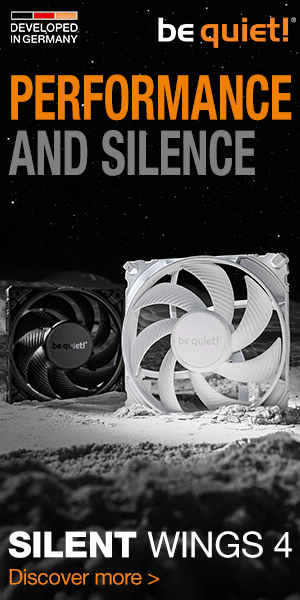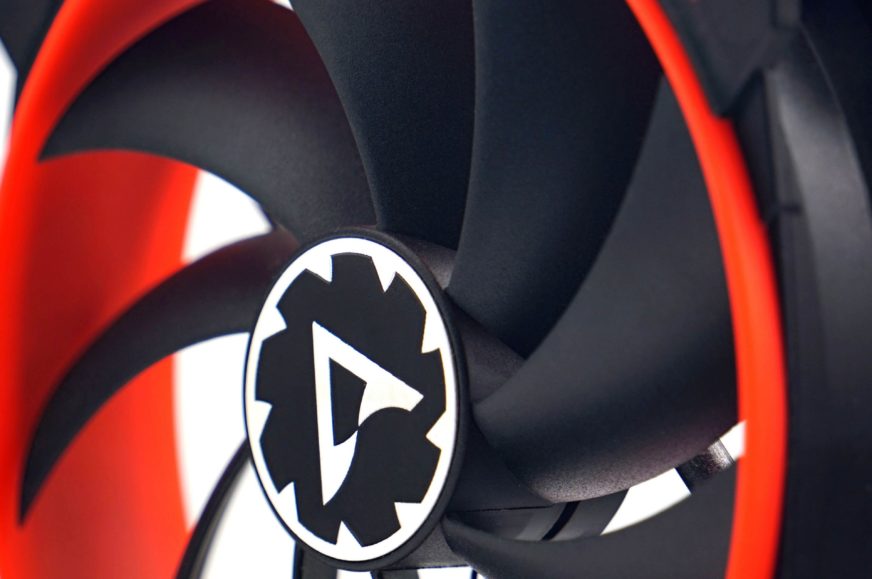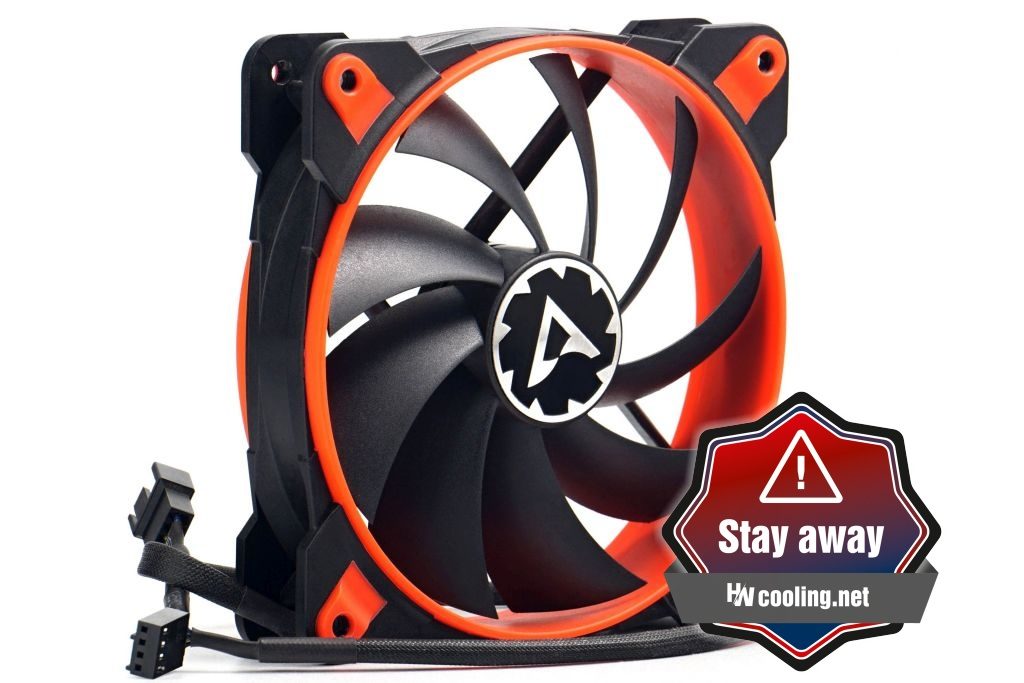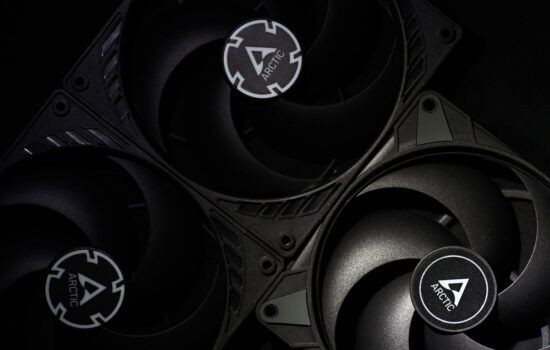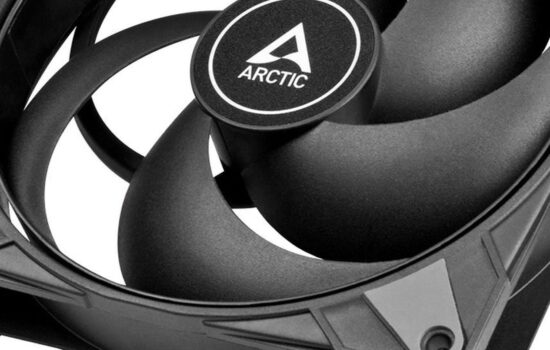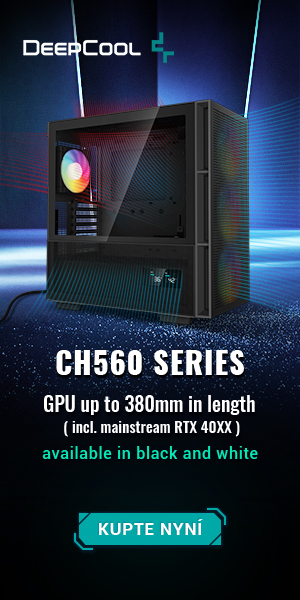Evaluation
We watched the Arctic BioniX F120’s behaviour during tests with our jaws dropped. First of all, because in some situations it really has top efficiency, and at a low price of around ten euros. But that’s how it excels in theoretical applications where nothing stands in it’s way. When it works with a filter, grille or radiator, the magic of the BioniX is gone. Such a significant turnaround is unique and fascinating.
Evaluation
The BioniX F120 is one big surprise. Who knew that we’d be more likely to dissuade you from a fan that achieves top-notch airflow in the 720–870 rpm range. In other words, at low speeds, suitable for system cooling of cases, it has a higher efficiency (ratio of airflow intensity to noise) than even substantially more expensive fans.
It has one catch though, the BioniX F120 achieves such results exclusively in obstacle-free applications. That means you can’t expose it to any obstacles. Even the plastic filter alone degrades airflow below competing models for similar money. The price/performance ratio here is, admittedly, still attractive, but in combination with a hexagonal grille or just on a hexagonal grille, Arctic BioniX F120 is no match for similarly cheap competition in the form of SilentiumPC Fluctus 120 PWM or Noctua NF-P12 redux-1700 PWM.
In addition, there is one negative associated with the BioniX F120, which is related to the acoustic performance.
In short, this fan often rumbles at frequencies of 120-200 Hz. And not just without obstacles, but especially with a plastic filter (on which it’s still quite a bit more annoying at lower speeds than the Fluctus 120 PWM). On a hexagonal grille, the rumbling sound disappears, but you can see how miserable it is with such an installation with the intensity of airflow… for normal practice, the BioniX F120 is unsuitable as a system fan. You might say that with a nylon filter it might not be so bad, but you won’t even install one. You will, but the motor housing will rub against the mesh and you’ll be glad to miss out on that acoustic experience.
The fan doesn’t score even on a radiator, „zero“ airflow, „zero“ static pressure, but at least it doesn’t rumble. Although with unsatisfactory performance results this does not matter, as the BioniX F120 will not stand up to such use anyway. So what use is it suitable for besides a system fan that has no obstacles in front of/behind it? Let’s take a closer look at the motor. Power draw is at the same speed at (~2 W) the level of the SilentiumPC Fluctus 120 PWM. Friction, which Arctic stresses is supposed to be extremely low, will then be similar. This comparison is not meant to diminish the truth value of this claim or the quality of the “German” lubricant (it’s probably not going to be second-rate in the Fluctus either), but it’s not going to be a huge competitive advantage either.
The vibration of the BioniX F120 is both lower and higher than the Fluctus, depending on the mode selected. At maximum speed, in addition to the higher airflow, the Arctic fan vibration is 50% lower. However, in the mode normalized to a fixed noise level of 45 dBA, the SPC Fluctus 120 PWM already has a significant advantage. It’s a bit like swinging on a seesaw, though. Arctic in turn takes the initiative at medium to low speeds, agreeing with the company’s slogan “maximum quietness, minimum vibration”. The fan starts to twitch a bit towards the lower limit, from 500 rpm downwards. This is where the motor is clearly having rotor centering issues.
To render a verdict over the BioniX F120 is again rather complicated and a bit unpleasant. Not because anything is ambiguous, but because its theoretical airflow efficiency at lower speeds is charming And you could probably close one eye to the rumbling sound. At low speeds, where the BioniX F120 excels most, all frequencies (even the rumbling ones) are very quiet and one may not register them at all. But so what if all the good stuff is only on a theoretical level (no obstacles) and in practice the fan can’t cope with the usual limitations that kill all its good qualities? The stunning fan on paper becomes an average to below average grey mouse even in this low price range. We don’t like to do it, but unfortunately, once again, the label “Stay away!” sums it all up best.
| Arctic BioniX F120 |
| + Obstacle-free top-notch airflow efficiency |
| + Favourable price/performance ratio with plastic dust filter |
| + Low price, the fan is in stores for about 10 euros |
| + Wide speed range |
| + Up to six colour versions |
| + Very low speeds possible (from approx. 130 rpm) |
| + Very quiet motor and bearing operation |
| + Decent build quality |
| + Really powerful engine |
| + Very long, 10-year warranty |
| - Large drop in airflow and static pressure with any obstacle... |
| - ... enormous airflow restriction with grille and radiators |
| - Doesn't make much sense for any use, even without considering the low price |
| - Annoying rumbling in many settings |
| - Collides with nylon dust |
| - Hard anti-vibration pads |
| Approximate retail price: 10 EUR |
- Contents
- Arctic Bionix F120 in detail
- The basis of the methodology, the wind tunnel
- Mounting and vibration measurement
- Initial warm-up and speed recording
- Base 7 equal noise levels…
- .. and sound color (frequency characteristic)
- Static pressure measurement…
- … and airflow
- Everything changes with obstacles
- How we measure power draw and motor power
- Measuring the intensity (and power draw) of lighting
- Results: Speed
- Results: Airlow w/o obstacles
- Results: Airflow through a nylon filter
- Results: Airflow through a plastic filter
- Results: Airflow through a hexagonal grille
- Results: Airflow through a thinner radiator
- Results: Airflow through a thicker radiator
- Results: Static pressure w/o obstacles
- Results: Static pressure through a nylon filter
- Results: Static pressure through a plastic filter
- Results: Static pressure through a hexagonal grille
- Results: Static pressure through a thinner radiator
- Results: Static pressure through a thicker radiator
- Results: Static pressure, efficiency by orientation
- Reality vs. specifications
- Results: Frequency response of sound w/o obstacles
- Results: Frequency response of sound with a dust filter
- Results: Frequency response of sound with a hexagonal grille
- Results: Frequency response of sound with a radiator
- Results: Vibration, in total (3D vector length)
- Results: Vibration, X-axis
- Results: Vibration, Y-axis
- Results: Vibration, Z-axis
- Results: Power draw (and motor power)
- Results: Cooling performance per watt, airflow
- Results: Cooling performance per watt, static pressure
- Airflow per euro
- Static pressure per euro
- Results: Lighting – LED luminance and power draw
- Results: LED to motor power draw ratio
- Evaluation



